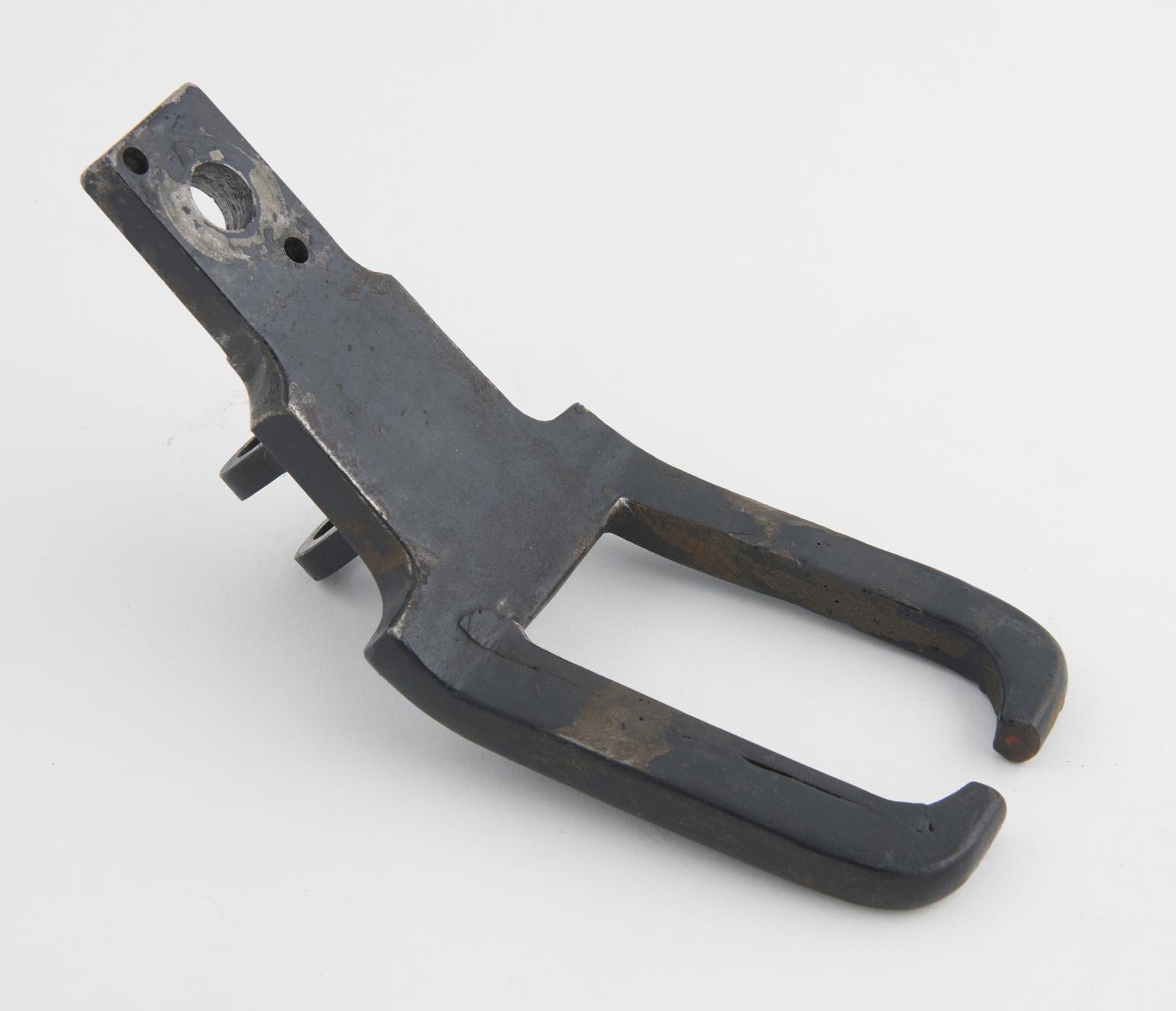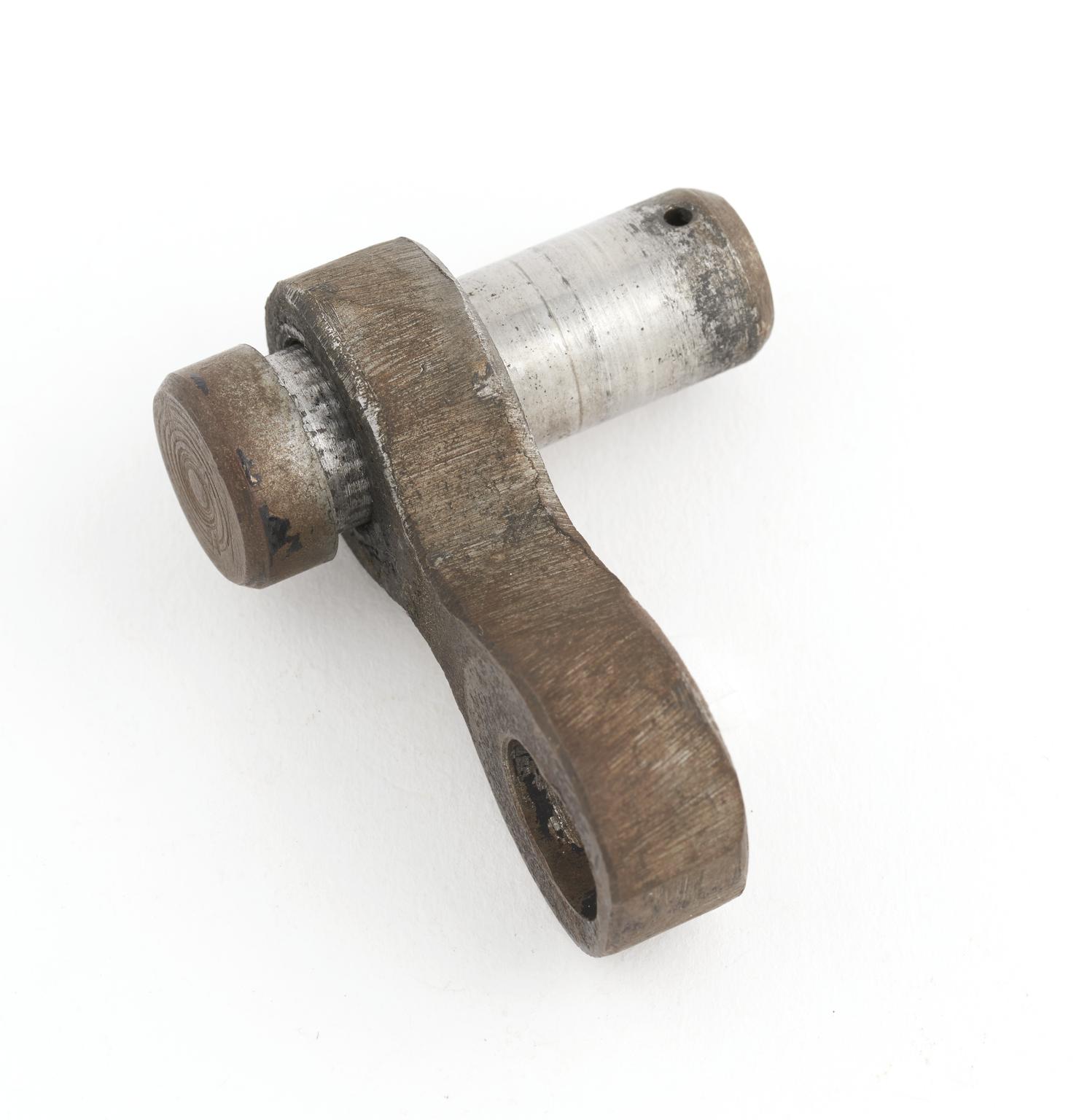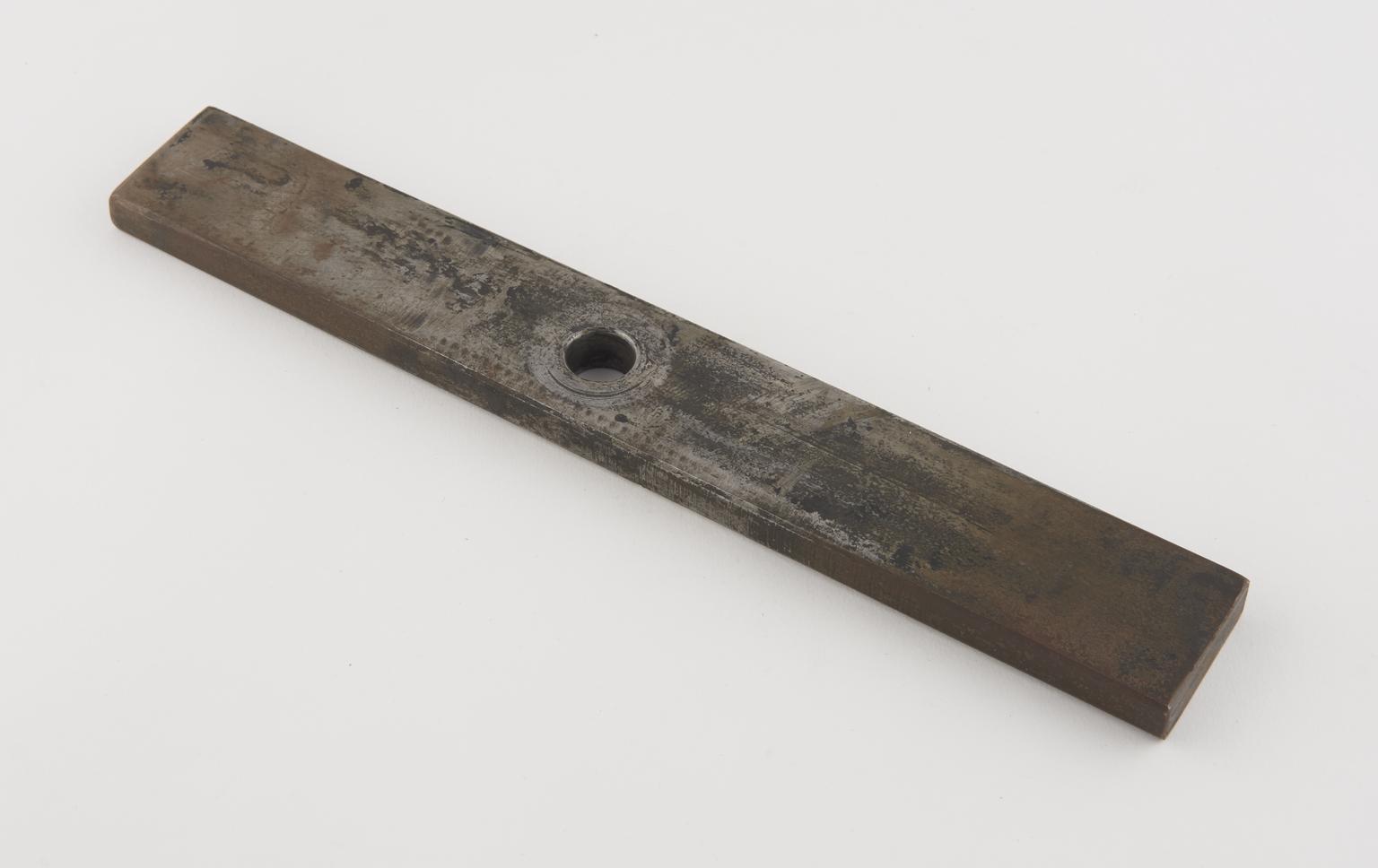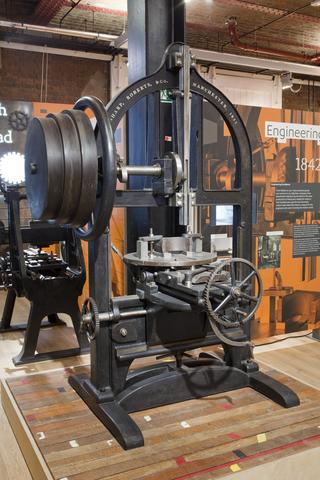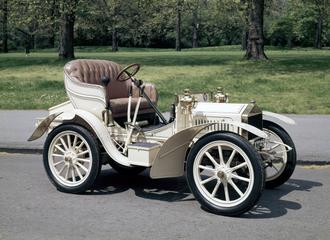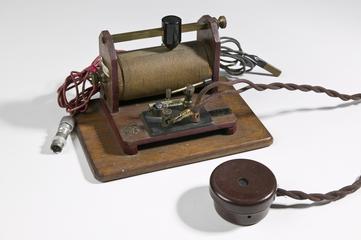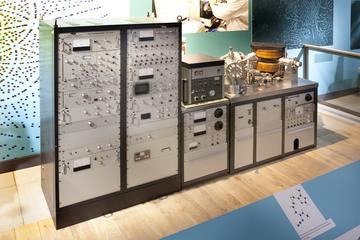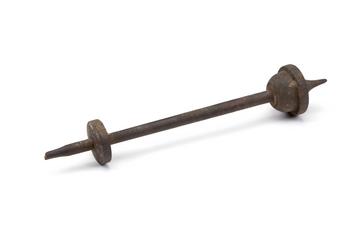Planing machine, made by Joseph Whitworth & Co. of Manchester, 1842. Belt drive, three pullies, one loos in the middle, to drive the lathe in either direction. Table worked by the worm screw and nut. Parts of the automatic cross feed to the tool holder are missing, as is the original tool holder which probably was the reversing type. This machine was originally in the LNWR Crewe works, reputedly used for making horn blocks for axles. Presented by A Bebbington & Son, Culland Street Works, Crewe.
The early planing machines made by Joseph Whitworth & Co. are different to those made by other manufacturers. Whitworth wanted to build a planing machine that cut the workpiece on both the forward and back strokes. He incorporated a rotating tool-box that reversed the position of the tool at the end of each stroke. This machine dates from 1842, and it is believed that its original tool-holder was the reversing type, although it is now missing. Three belt-driven pulleys drive the table, which can move in either direction to pass the workpiece under the cutting tool. Whitworth’s reversing mechanism was not widely adopted. Its complicated construction may have made it unreliable, and not sturdy enough for heavy engineering. This machine was originally in the London & North-Western Railway (L.N.W.R.) works at Crewe, where it was probably used to make horn blocks for axles. Whitworth had various headquarters, he rented a place on Port Street when he started up and moved to 44 Chorlton Street in 1833. A major new works at Openshaw opened in 1880 and the business gradually transfefred to there.
